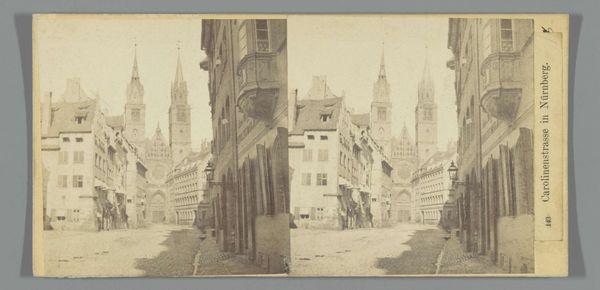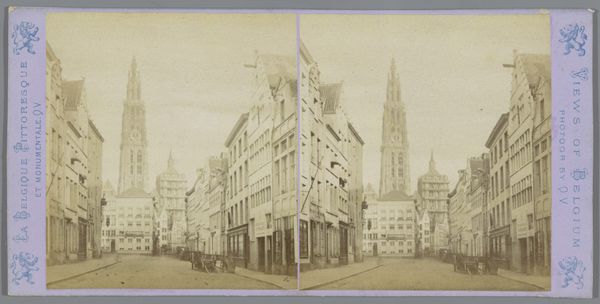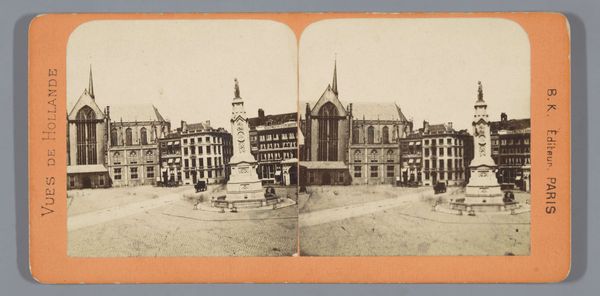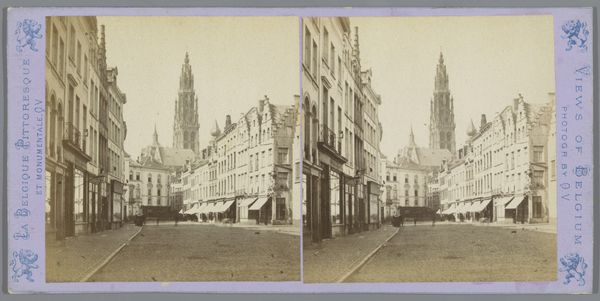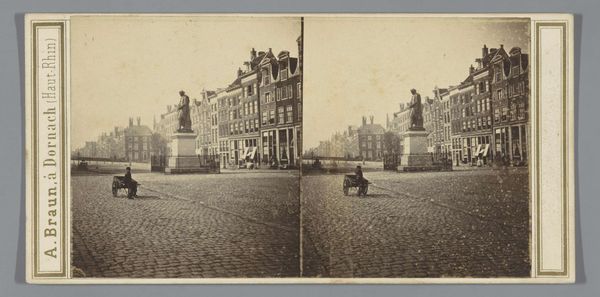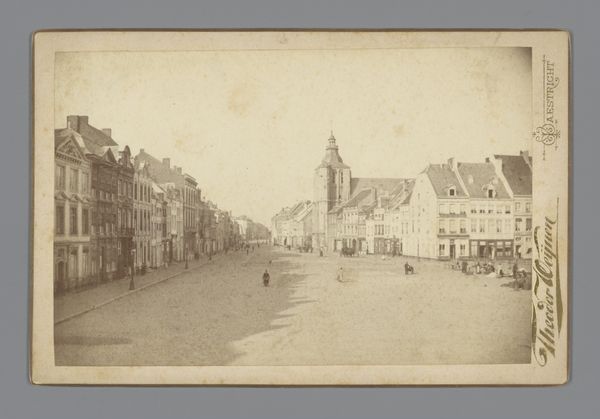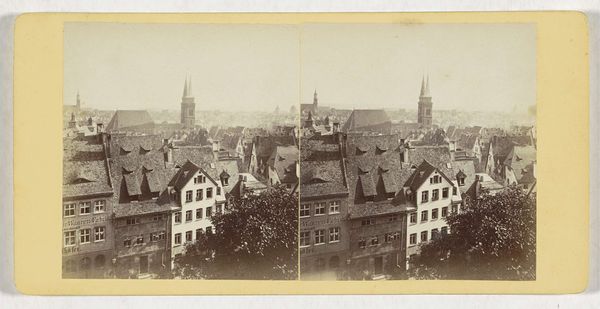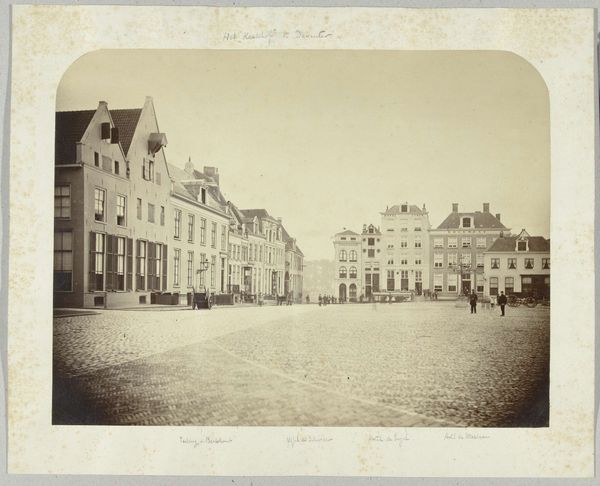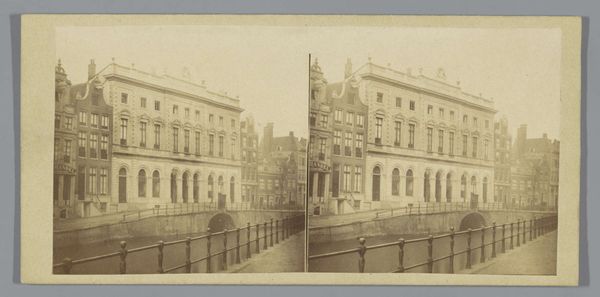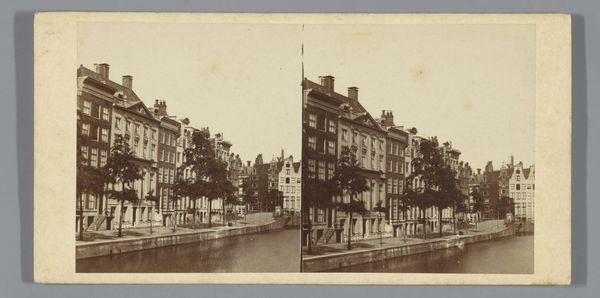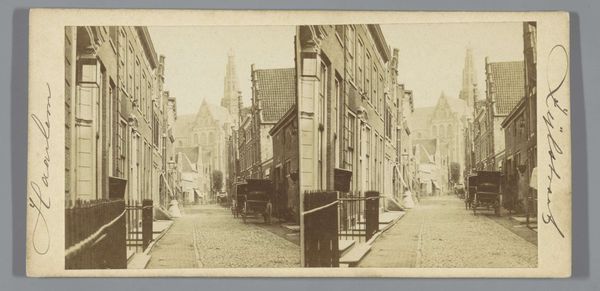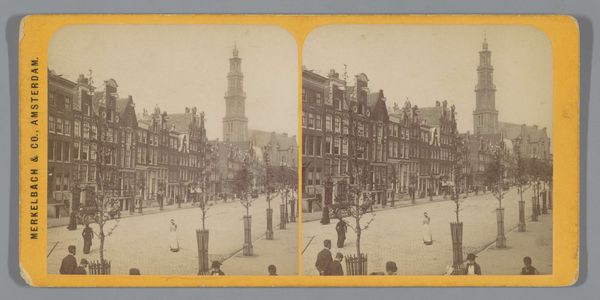
Dimensions: height 85 mm, width 170 mm
Copyright: Rijks Museum: Open Domain
This stereoscopic photograph of the Königstrasse in Nuremberg was made by Georg Böttger in the late 19th century. The process combines two nearly identical images to create a single, three-dimensional view. Photography in this period was a complex blend of science and craft. The wet collodion process, likely used here, involved coating a glass plate with chemicals, exposing it in the camera while still wet, and then developing it immediately. It demanded a high level of skill and was far from automated. The resulting image, a fragile glass negative, was then used to make prints on albumen paper. The stereoscopic format added another layer of complexity, requiring precise alignment of two lenses. The resulting image offered viewers a compelling sense of depth. This fed a public appetite for experiencing faraway places from the comfort of their homes. In this context, photography wasn't just about capturing reality; it was a crafted experience, designed to transport the viewer to another time and place. It bridges both art and the burgeoning industrial processes that defined the era.
Comments
No comments
Be the first to comment and join the conversation on the ultimate creative platform.
